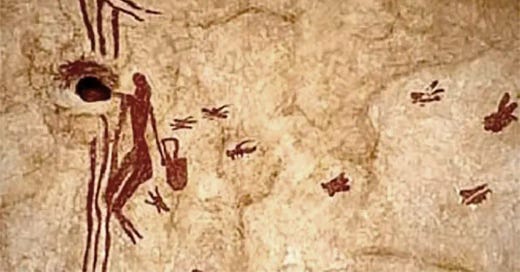During the Christmas holidays of 1919, Jamie Poch y GarÍ made an excursion to the village of Bicorp, some 90km southwest of the city of Valencia in Spain. At the time, Poch was a professor of geography at the Normal School for Teachers in Valencia and had been informed by several of his pupils that the countryside near Bicorp contained some interesting geographical features.
It's not entirely clear from his account whether Poch’s pupils had told him about the presence of rock art in the caves or whether his expedition was purely a geological one, and that the find was accidental. Either way, Poch walked several hours or more exploring the area around Bicorp, until he eventually found a cave near the ravine called La Rebolla. The cave is called the Cuevas de la Araña (also known as the Spider Caves in English). When he entered it, he found nothing of interest but did spot two inner caves off to the right. There Poch was amazed. He’d found representations of various animals such as deer, goats, and men. He described the paintings as ‘reddish, more or less intense or blackish’ (Hernández-Pacheco, 1920, 58).
Poch had found an extremely important example of surviving Levantine cave art created around 6,000 years ago in the Neolithic period. Subsequent examinations of the site (which I shall come to shortly) revealed other reliefs, including the one that most interests here, a scene depicting a person climbing a ladder off a cliff face. The person is holding a basket and collecting honey from a wild colony of bees. This is the earliest evidence of honey hunting activity by humans, which will be the topic for today’s essay.




